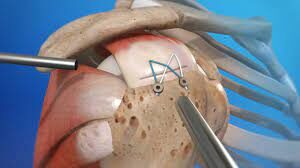The objective of this study was to describe the utilization of physical therapist and occupational therapist services after rotator cuff repair and examine variation in rehabilitation characteristics by profession.
This retrospective cohort study used the IBM MarketScan Commercial Claims and Encounters database. Patients included were 18 to 64 years old and had undergone outpatient rotator cuff repair between 2017 to 2020. Physical therapist and occupational therapist services were identified using evaluation and treatment codes with profession-specific modifiers (“GP” or “GO”). Factors predicting utilization of formal rehabilitation and physical therapist versus occupational therapist services were examined and univariable and multivariable analyses of days to initiate therapy, number of visits, and episode length by profession were completed.

Among 53,497 patients with rotator cuff repairs, 81.2% initiated formal rehabilitation (93.8% physical therapist, 5.2% occupational therapist, 1.0% both services). Patients in the Northeast and West (versus the South) were less likely to receive rehabilitation (odds ratio [OR] = 0.67 to 0.70) and less likely to receive occupational therapy (OR = 0.39). Patients living in the Midwest (versus the South) were less likely to receive rehabilitation (OR = 0.79) but more likely to receive occupational therapy (OR = 1.51). Similarly, those living in a rural (versus urban) area were less likely to utilize rehabilitation (OR = 0.89) but more likely to receive occupational therapy (OR = 2.21). Additionally, receiving occupational therapy instead of physical therapist services was associated with decreased therapist visits (−16.89%), days to initiate therapy (−13.43%), and episode length (−13.78%).
Most patients in our commercially insured cohort utilized rehabilitation services, with a small percentage receiving occupational therapy. We identified profession-specific variation in utilization characteristics that warrants further examination to understand predictors and associated outcomes.
Variation in rehabilitation utilization after rotator cuff repair, including profession-specific and regional differences, may indicate opportunities to improve standardization and quality of care.
 Blog de Fisioterapia Fisioterapia
Blog de Fisioterapia Fisioterapia



